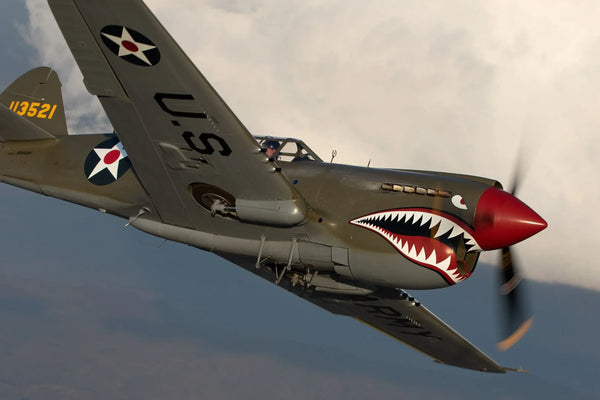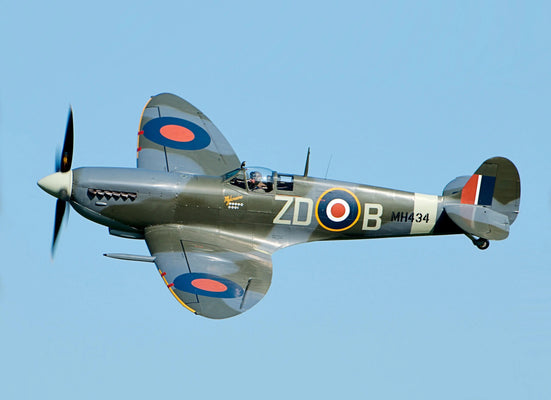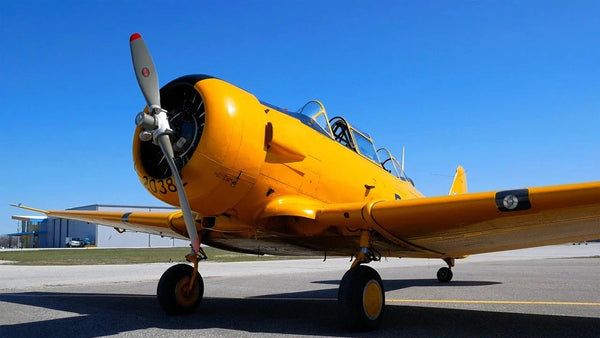In the final, desperate years of World War II, the Allied powers sought a weapon that could strike a decisive blow against the heart of the Japanese Empire. The answer came in the form of a technological marvel: the B-29 Superfortress. More than just an incremental improvement on previous bombers, the B-29 was a leap forward in aviation engineering. Its arrival on the scene marked a dramatic escalation of the air war and directly contributed to the war's conclusion. This blog post will argue that the B-29’s combination of technological innovation, strategic effectiveness, and its pivotal role in the final atomic missions made it one of the most decisive weapons of World War II.
The Technological Leap
Advanced Design and Engineering
The B-29 was a testament to American industrial and engineering power. It was the first production bomber to feature a fully pressurized cabin, a revolutionary innovation that allowed crews to operate at high altitudes in relative comfort and efficiency, drastically reducing the effects of fatigue and frostbite. Its defensive armament was equally groundbreaking. Instead of manned gun positions, the B-29 featured remote-controlled gun turrets. This system allowed a single gunner to control multiple turrets from a central sighting station, creating a more streamlined and effective defense against enemy fighters. This, combined with its longer range and significantly higher payload capacity than its predecessors like the B-17 Flying Fortress, made the B-29 an unparalleled strategic asset.

B-29 Superfortress Infographic
Power and Performance
The heart of the B-29’s performance was its four massive Wright R-3350 Duplex-Cyclone engines. While these engines were powerful and gave the B-29 its impressive speed and altitude capabilities, they were also notoriously temperamental, often overheating and causing reliability issues in the early stages of the bomber's deployment. Despite these challenges, the R-3350s allowed the B-29 to fly at speeds and altitudes that made it extremely difficult for Japanese fighters to intercept. Its ability to fly above the reach of most enemy anti-aircraft fire and its sheer range meant it could reach deep into enemy territory from bases thousands of miles away.

Wright R-3350 Duplex-Cyclone engines
Strategic Impact in the Pacific War
Long-Range Strikes on Japan
The B-29’s strategic value was fully realized in the Pacific Theater. Operating from newly captured airfields in the Mariana Islands—such as Guam, Tinian, and Saipan—the Superfortresses could fly directly to mainland Japan. Initially, the U.S. Army Air Forces attempted high-altitude precision bombing, but the unpredictable jet stream winds and cloud cover over Japan made this approach largely ineffective. The strategy was then shifted to low-level incendiary raids. This change in tactics, starting with the devastating Tokyo firebombing of March 1945, proved incredibly effective, unleashing a maelstrom of destruction on Japan's densely populated, wooden cities and decentralized industrial base.

The Paciffic strategy (1941-1944)
Shaping the Air War
The constant presence of B-29s flying over Japan had a profound effect. It demonstrated America's overwhelming industrial might and its ability to project power thousands of miles away, a capability that Japan could not counter. The relentless bombing campaigns disrupted Japanese industry, crippling factories and supply lines, making it impossible for the country to sustain its war effort. Perhaps most importantly, the raids broke the morale of the Japanese populace, who had been told that their homeland was invulnerable.

B-29 formations over Japan, summer 1945
The Atomic Missions
Hiroshima and Nagasaki
The B-29’s place in history was cemented by two specific missions. On August 6, 1945, the B-29 "Enola Gay," commanded by Colonel Paul Tibbets, dropped the first atomic bomb, "Little Boy," on Hiroshima. Three days later, another B-29, the "Bockscar," dropped "Fat Man" on Nagasaki. These two missions were the final, cataclysmic blows that directly led to Japan's unconditional surrender. The B-29 was the only aircraft capable of carrying these massive, unprecedented weapons and delivering them with the required range and precision.

Japan map Hiroshima and Nagasaki
The B-29 as a Symbol
The B-29 became inextricably linked with the end of the war. To the Allies, it was a symbol of overwhelming technological superiority and the final hammer blow that brought an end to the global conflict. To the Japanese, it was a symbol of the immense destructive power that had been unleashed upon them, forcing their hand toward surrender and ushering in a new, terrifying atomic age.
Legacy of the B-29
The B-29’s influence extended far beyond World War II. It served as a blueprint for postwar strategic bombing doctrine and influenced the design of subsequent long-range bombers. Many of its innovations—from the pressurized cabin to remote gun control systems—were incorporated into later aircraft, including the iconic B-36 Peacemaker and the B-52 Stratofortress, which continues to fly today. Surviving B-29s, such as the are preserved and commemorated as a testament to the aircraft’s pivotal role in history, reminding us of its power and the immense sacrifices made in the war.

The B-29 Superfortress was more than just a flying machine; it was a game-changer. Its advanced technology, from its pressurized cabin to its remote gun turrets, set a new standard for strategic bombers. Its strategic role in the Pacific, from the firebombing of cities to the delivery of the atomic bombs, directly accelerated the end of the war. The B-29 was not merely a tool of war; it was the machine that helped bring a world war to a conclusion, cementing its place in the annals of history as one of the most significant and decisive weapons ever built.




